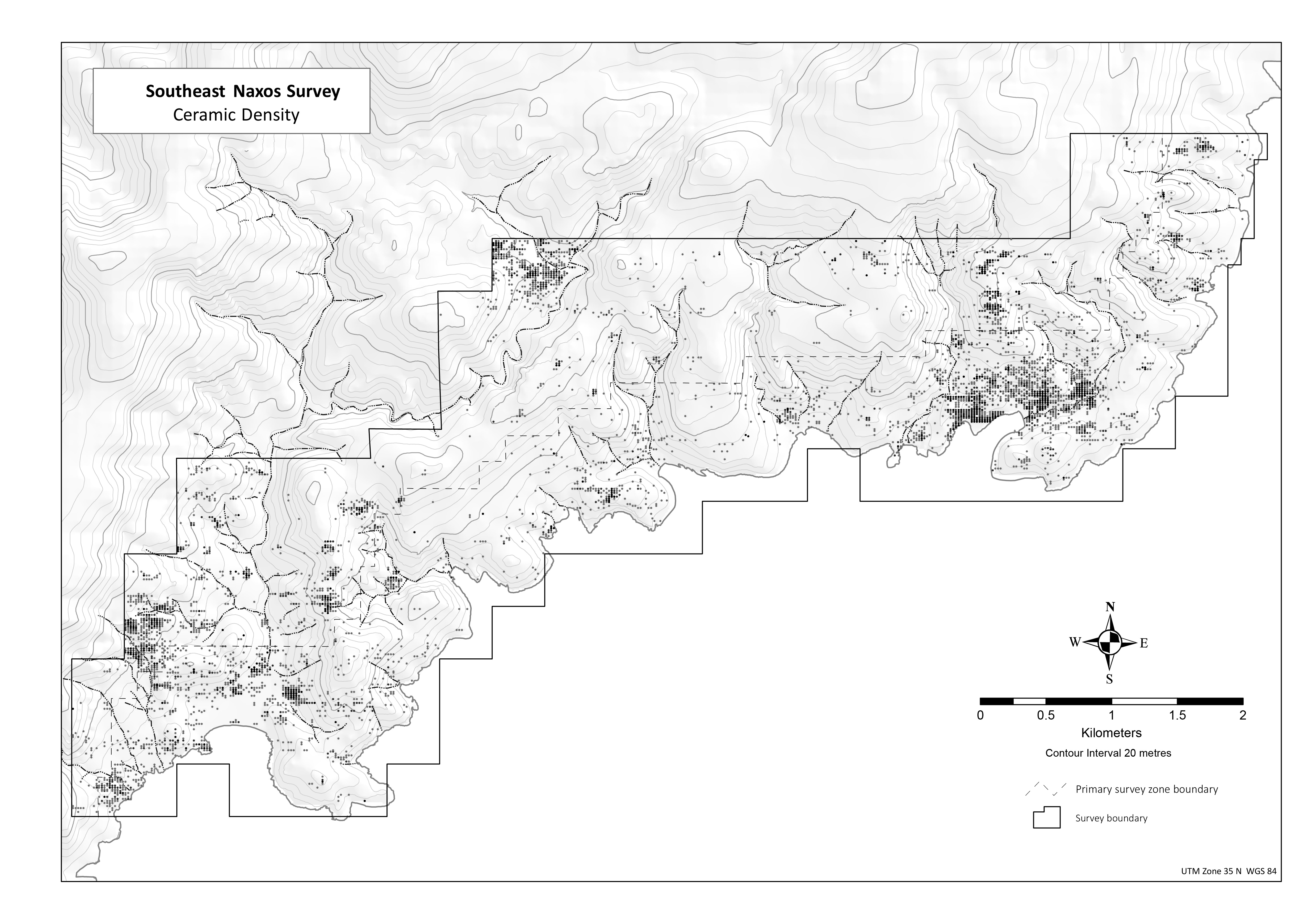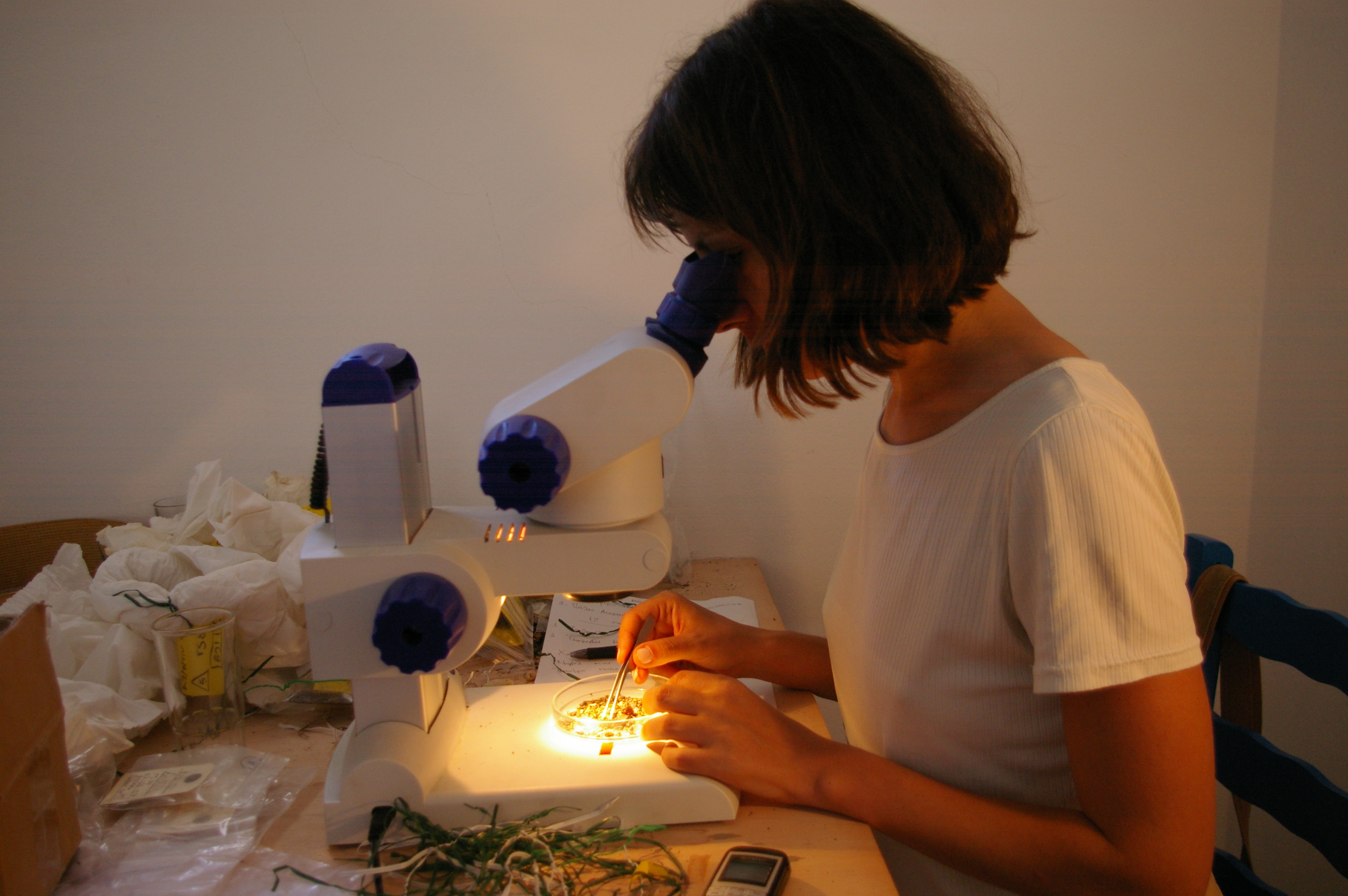THE KEROS-NAXOS SEAWAYS AND THE COASTAL HINTERLAND OF THE KEROS SANCTUARY
In 2015 a new four-year project was initiated involving survey on Naxos (carried out in 2015) and on Kato Kouphonisi (to be carried out in 2018), with excavations on Dhaskalio and on Keros.

The Keros Island Survey of 2012-2013 recovered remarkable detail concerning the nature and extent of habitation on Keros during the period of use of the sanctuary, as well as generating the data required for a diachronic habitation history of the island. However, Keros’ central position in the Small Cyclades suggests that the maritime hinterland of Keros is just as important, and this is confirmed by the study of the materials found during the excavation, most of which are imported. Southeast Naxos and Kato Kouphonisi are both within one day’s journey from Keros using bronze age transport, and so a fuller understanding of the Keros hinterland requires data both from Keros and from these nearby landmasses.

Survey on Naxos in 2015 demonstrated that no Early Bronze Age site existed on the same scale as the Keros sanctuary, underlining its centrality and nodal position in Early Cycladic networks. Prehistoric habitation was confirmed throughout the survey area, but seemingly less intense in nature than that uncovered on Keros itself. The site of Spedos seems to have been the largest and most important of the Early Bronze Age sites of southeast Naxos.

Excavations began once again on Keros in 2016, and continued in 2017. The excavations have demonstrated that although the buildings of the summit area are predominantly of Phase C (2400-2300BC), most areas of construction on Dhaskalio in fact date to Phase B (2550-2400BC). This now places the floruit of Dhaskalio, and the intensive programme of construction seen there, in Phase B, with the buildings on the summit in Phase C representing a final period before abandonment. This allows a new narrative of the development of the sanctuary: from hypaethral gatherings of people from near and far to carry out community-building rituals in Phase A to the establishment of the largest and most architecturally impressive centre in the Cyclades in Phase B.

The 2017 excavation gathered further vital evidence of the extent and nature of the constructions on Dhaskalio in all phases, and continued excavation on Keros where information regarding agricultural practices and metalworking is being recovered. Excavation on Dhaskalio in 2017 continued in five trenches already opened, with three new locations. Trenches were chosen in order to investigate the early and middle phases of the site, to understand its architectural programme, and to gather evidence for daily life through organic data related to the subsistence base, and evidence for craft specialisation. These aims were met by the excavation of a so-far unique entrance stairway at the foot of the site, a complex of walls forming a façade partway up, and a major wall near the summit; the excavation of a metallurgical workshop; and the excavation of room complexes in several areas.

The Keros-Naxos Seaways is a project of the British School at Athens and the University of Cambridge. It is directed by Colin Renfrew and Michael Boyd. The Southeast Naxos Survey and the Kato Kouphonisi Survey are directed by Colin Renfrew and Michael Boyd with Dimitris Athanasoulis; Irini Legaki is Associate Director, and Assistant Directors are Neil Brodie, Giorgos Gavalas, Jill Hilditch and Joshua Wright. The excavations on Keros are directed by Colin Renfrew and Michael Boyd, with Irini Legaki as Associate Director, Assistant Directors Evi Margaritis and Giorgos Gavalas (Peggy Sotirakopoulou having also acted as Assistant Director in 2016). Ioanna Moutafi is Field Director on Dhaskalio.
 The project runs a field school, directed by Evi Margaritis of the Cyprus Institute, with tuition and academic credit provided by the Cyprus Institute.
The project runs a field school, directed by Evi Margaritis of the Cyprus Institute, with tuition and academic credit provided by the Cyprus Institute.
The project is supported by the Institute for Aegean Prehistory, the McDonald Institute for Archaeological Research, the Cyprus Institute, the Leventis Foundation, Gerda Henkel Stiftung, National Geographic Society, the British Academy, the Leverhulme Trust, the Society of Antiquaries of London, the British School at Athens, Cosmote, Blue Star Ferries and EZ-dot.
![]()

![]()
![]()


